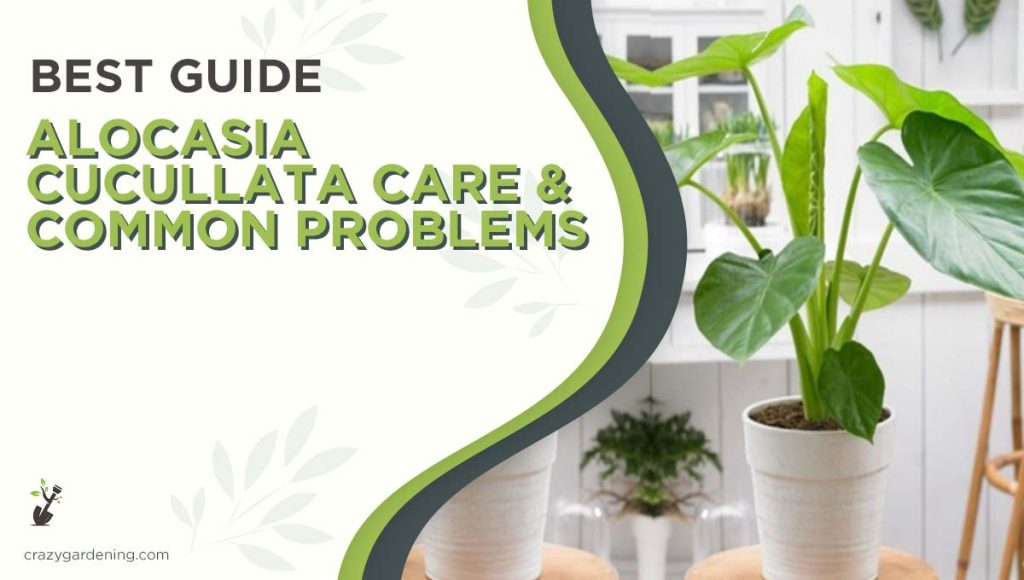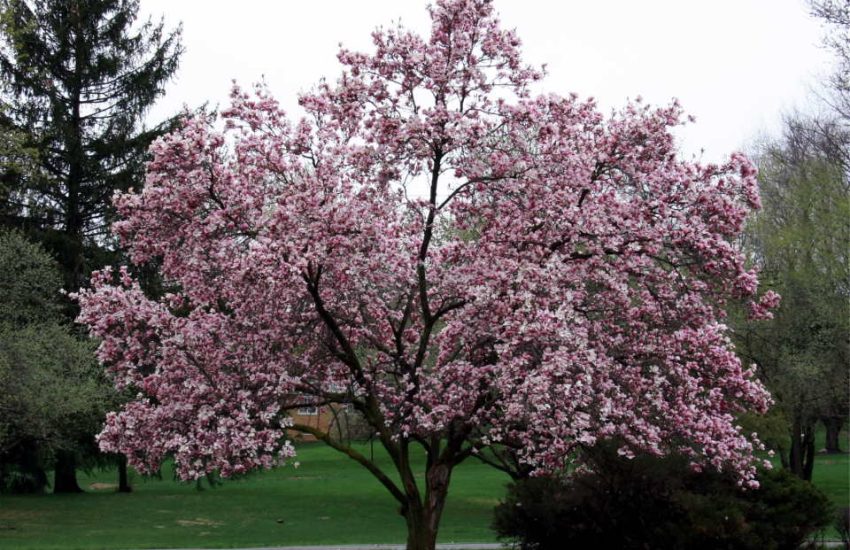Alocasiaa Cucullata #1 Care [From Wilting to Thriving 2025]
If you’re a fan of exotic plants, you’ll love alocasia cucullata. This unique leafy green thrives in warm climates and can be grown either outdoors or indoors.
While it’s not the easiest plant to care for, with a little bit of know-how, you can have this beautiful specimen adding life to your garden or home dcor.
In this post, we’ll give you all the information you need to grow and maintain an alocasia cucullata, as well as some common problems you may encounter along the way. Let’s get started!

What is Alocasiaa Cucullata?
The Alocasia cucullata has tall green stems that are covered in glossy green leaves shaped like a heart. The leaves have pronounced veins.
In its native Thailand and Laos, it is commonly kept in Buddhist temples due to the widespread belief that touching it will bring good fortune.
For an ambiance of tropical calm, pair Monstera deliciosa, sometimes known as the Swiss cheese plant, with other tropical plants.
As its name suggests, Alocasia Cucullata has dark green, glossy leaves. The plant grows a lot of close-together foliage. The Cucullata plant comes in a range of sizes, with a maximum height of 60 inches (152 centimeters).
Alocasia Cucullata Growth & Care Guide
If you have before that plant any other like Aglaonema Pink Moon](https://plantnative.org/gardening/aglaonema-pink-moon-care/#what-is-the-aglaonema-pink-moon-chinese-evergreen-plant) [Alocasia Bisma, or any other than you relize that caring is very important in keeping plant and your garden alive.
Watering
As with most tropical plants, Alocasia cucullata requires consistently moist soil. The best way to water your plant is to use a spray bottle and mist the leaves as well as the soil around the roots.
Be careful not to overwater, as this can lead to root rot.
It’s a good idea to check the moisture level of the soil before watering by sticking your finger into the potting mix. If it feels dry, it’s time to give your plant a drink.
Lighting
This plant does best in bright, indirect light but can also tolerate some direct sunlight.
If you notice the leaves starting to yellow or looking limp, this is a sign that your plant is not getting enough light. Move it to a brighter spot.
Temperature
Alocasia cucullata prefers warm temperatures and will not tolerate cold drafts. If you’re keeping your plant indoors, make sure it’s in a room that doesn’t get too cold in winter.
An ideal temperature range for this plant is between 60-85 degrees Fahrenheit (15-29 degrees Celsius).
Soil
This plant grows best in rich, well-draining soil. A good potting mix to use for Alocasia cucullata is two parts peat moss and one part perlite or coarse sand.
You can also add some organic matter to the mix, such as compost or worm castings.
Humidity
Needs a more humid than usual setting. Spray often for the greatest results. It can benefit from being placed in the bathroom or kitchen if it needs a boost.
Height and Rate of Growth
When given the proper care and nutrients, alocasias can develop rapidly. A typical Hooded Dwarf Elephant Ear will stand between 45 and 90 centimeters tall.
Fertilizing
Feed your plant every month during the growing season with a balanced fertilizer diluted to half strength. In winter, you can reduce the frequency to every other month.
Repotting
Alocasia Cucullata has rich, green, heart-shaped foliage. You can pot it in elegant containers and baskets to enhance its appearance. Repotting Cucullata requires a container that just fits its roots.
Once a year, repot Cucullata. Healthy development requires packed roots. Start summer and spring repotting. During winter, the plant doesn’t grow. Therefore, you don’t need to repot it.
Pruning
Large Alocasia Cucullata plant. Without enough room, it can be an issue.
It may need pruning to control size. Cut 1 to 2 Cucullata vines with pruning shears or scissors. As fresh leaves form at the top, cut the lowest leaves. Cut off yellow and dead leaves as they look bad.
Old age or fungal infection may cause this. Pruning yellow and dead leaves makes your plant more delicate and elegant and reduces disease transmission.
Propagation
Alocasia cucullata is easily propagated by division. To do this, simply remove the plant from its pot and carefully divide the root ball into two or more sections.
Replant each section in its pot filled with fresh potting mix. Water well and keep the soil moist until new growth appears.
Growth
Huge heart-shaped leaves can be bred from the Alocasias Cucullata plant. Summer and spring are its prime growing months, while late autumn and winter find it lying dormant.
The maximum height of a Cucullata plant is 13 feet (4 meters). This group develops rapidly. They shed their leaves quickly, yet they replace them just as rapidly.
You can help it attain its full height and development potential by giving it the environment it needs to flourish.
Common Issues with Alocasiaa Cucullata
Pests and Diseases
This plant is susceptible to mealybugs, aphids, and spider mites. These pests can be controlled with regular applications of neem oil or an insecticidal soap solution.
If your plant starts to show signs of distress, such as yellowing leaves or stunted growth, check for pests and treat accordingly.
Alocasia cucullata is also susceptible to fungal diseases such as root rot and leaf spot.
These can be avoided by watering only when the soil is dry and keeping the leaves dry. If your plant does get a fungal disease, you can treat it with a fungicide.
Root Rot
Alocasia cucullata has root rot. Overwatering or insufficient drainage causes roots to sit in water. This can kill a plant’s roots.
Water your plant only when the soil is dry and uses well-draining soil to prevent root rot. If your plant has root rot, transplant it to fresh, well-draining soil.
Leaf Spot
Alocasia cucullata also gets leaf spot. Wet leaves cause fungus and leaf spots. Keep the leaves dry and water only when the soil is dry to prevent leaf spots. Treat the leaf spot with a fungicide.
Powdery Mildew
Powdery mildew is another fungal disease that can affect Alocasia cucullata. It’s caused by high humidity and wet leaves, which can lead to the growth of powdery mildew on the leaves.
To avoid powdery mildew, make sure you keep the leaves dry and the humidity low. If your plant does get powdery mildew, you can treat it with a fungicide.
Conclusion
The Alocasia cucullata is a stunning plant that can provide the appearance of a tropical setting inside of your home.
As long as you keep a watch out for diseases and pests, it doesn’t require much maintenance on your part.
If you want to avoid difficulties, you should only water the plant when the soil is dry and you should also keep the leaves dry.
If you give your Alocasia cucullata the attention and care it needs, it will flourish and bring you years of pleasure.
Related Articles
* Piper Ornatum Care
* ](https://plantnative.org/gardening/philodendron-dark-lord-vs-black-cardinal/)[Anthurium Villenaorum Care
* Dischidia Ovata Care
FAQs
Question
How do you take care of Alocasia Cucullata?
Answer
There is a possibility that you have been overwatering your plant, which has resulted in its soil becoming saturated. Maintain the soil in a moist but not soggy state, and water it only when necessary. In addition, if you want the best care, follow the guide that was just given.
Question
Why is my Alocasia Cucullata dying?
Answer
The watering frequency for Alocasia Cucullata can vary depending on environmental factors, but as a general guideline, watering every 1-2 weeks is recommended.
Question
How often do you water alocasia Cucullata?
Answer
The light that is bright but not direct is ideal for alocasias. This is because the plant thrives on the forest floor underneath the tree canopy in its natural environment. Avoid placing your Alocasia in a location where it will be subjected to direct sunlight for an extended period since this will produce leaf burn.
Question
Does Alocasia need sun?
Answer
It is generally a good idea to remove dying leaves from an Alocasia plant to help the plant focus its energy on healthy growth. To remove dying leaves, use clean, sharp scissors or pruning shears to cut off the leaves at the base of the plant. Be sure to disinfect your scissors or shears before and after use to prevent the spread of any potential diseases.

